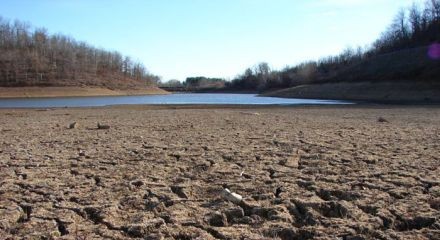29.05.2025

No quick return
Billionaires, the rich, the upper sections of the middle classes, are disproportionately responsible for the degradation of the ecosystem. However, even if we put an end to capitalism tomorrow it would still take generations to restore the damage already done, argues Eddie Ford
There is a phrase commonly attributed to Jean-Jacques Rousseau, though popularised during the French Revolution: “When the people shall have nothing more to eat, they will eat the rich”.1 Maybe we will: we have to follow that advice if we want to save the planet from ecological destruction.
While we have always known that the wealthy are responsible for the emission of large amounts of greenhouse gases, directly linking that inequality into responsibility for climate breakdown is another question. But now a paper in Nature Climate Change details how the wealthiest 10% are responsible for two-thirds of global warming since 1990 by new research that attempts to specifically quantify how much that inequality in emissions feeds into climate breakdown - the writers call it a shift from carbon accounting toward climate accountability.2 In order to get the result, researchers fed wealth-based greenhouse gas emissions inequality assessments into climate modelling frameworks, allowing them to systematically attribute the changes in global temperatures and the frequency of extreme weather events that have taken place between 1990 and 2019.
Hence this practically means that, by subtracting the emissions of the wealthiest, you can then work out the changes to the climate and frequency of extreme weather events that would have taken place without them. By comparing those with the changes that have actually occurred, that enables you to calculate a lot more exactly their responsibility for the crisis the world finds itself in today. We know that in 2020 the global mean temperature was 0.61°C higher than 1990 and the journal found that about 65% of that increase could be attributed to emissions from the richest 10% across the globe - a group the researchers defined as including all those earning more than €42,980 (£36,472) a year.
Alpha
The wealthier you are, the more responsibility you will bear - which is a statistical judgement, of course, not a moralistic one, as we are dealing with a system that nobody controls. Production for the sake of production, accumulation for the sake of accumulation - the alpha and omega of capitalism. Anyway, the richest 1% - defined for the purposes of study as those with annual incomes of €147,200 - are responsible for 20% of global warming, and the richest 0.1% (that is, the 800,000 or so people in the world who ‘earn’ more than €537,770 annually) are responsible for 8%. In this way, the authors of the study concluded that the wealthiest 10% contributed 6.5 times more to global warming than the average, with the top 1% and 0.1% contributing 20 and 76 times more respectively. Even more starkly, the 50 richest billionaires produce more carbon emissions in under three hours than average British person does in their entire lifetime.
To put it another way, if everyone had only emitted like the bottom 50% of the global population, there would have been minimal global warming since 1990. Conversely, if we could all become ‘winners’ and emit the same as the top 10%, the temperature increase would have been an almost completely unsurvivable 12.2°C. Importantly, the study emphasised that emissions embedded in financial portfolios - not just personal consumption - are those that have driven global warming. However, the paper in Nature Climate Change stops short of calling for system change, of course. Rather, in the opinion of one of the paper’s authors, Carl-Friedrich Schleussner, head of the Integrated Climate Impacts Research Group, owners of capital could be held accountable through progressive taxes on wealth and carbon-intensive investments - a wealth tax which he considers as more equitable than broad carbon taxes, which tend to fall on those with less broad shoulders!
But all calls upon the super-rich are resisted, of course. Last year, Brazil - as host of the G20 summit in Rio de Janeiro - pushed for a 2% tax on the net worth of individuals with more than $1 billion in assets. Although the various leaders agreed fine words about the need to “engage cooperatively to ensure that ultra-high-net-worth individuals are effectively taxed”, there has been absolutely no action taken. More like a greenwashing exercise, just as we have had one climate conference after the other with plenty of worthy resolutions, but almost next to nothing more concrete. There is a yawning gap between what they say and what they actually do, and it is ever worse when it comes to supplying finance to the so-called underdeveloped world - that often takes the form of crippling loans or onerous conditions.
Warning
Meanwhile, the Copernicus Climate Change Services funded by the European Union has recorded the second warmest March globally and, even more seriously, the lowest Arctic winter sea ice - based on a dataset using billions of measurements from satellites, ships, aircraft and weather stations around the world.3
So we find average surface air temperature in March of 14.06°C, which is 0.65°C above the 1991‑2020 average and 1.60°C above the pre-industrial level. This was the 20th month in the last 21 for which the global average surface air temperature was more than 1.5°C above the pre-industrial level. In the last 12 months it was 0.71°C above the 1991-2020 average, and 1.59°C above the pre-industrial level. As for the average temperature over European land for March 2025, it was 2.41°C above the 1991-2020 average. Indeed, temperatures were predominantly above average across the continent, with the largest warmth anomalies recorded over eastern Europe and south-west Russia.
But it was also a month with contrasting rainfall extremes across Europe, with many areas experiencing their driest March on record and others their wettest for at least the past 47 years. Extreme weather looks here to stay.
The average sea surface temperature (SST) for March 2025 was 20.96°C - the second-highest on record for the month and 0.12°C below the March 2024 record - SSTs remained unusually high in many ocean basins and seas. Ominously, Arctic sea ice reached its lowest monthly extent for March in the 47-year satellite record at 6% below average - marking the fourth consecutive month in which the sea ice extent has set a record low for the time of year. Yet, as Arctic sea ice also reached its annual maximum extent in March, the month marked the lowest annual maximum ever recorded for the region - sea ice concentrations were below average in most ocean sectors outside the central Arctic Ocean. It is a similar story for Antarctic sea ice, though not quite as bad - it recorded its fourth lowest monthly extent for March.
In other words, global temperatures remained abnormally high in March - which also marked the end of Australia’s hottest 12-month period in the continent’s recorded history - and unfortunately we appear to be entering a new norm. Last year, of course, was the hottest on record and the first calendar year with temperatures above the 1.5°C critical limit set by the 2016 Paris Accords. While this does not signal a permanent breach, which scientists say is measured over decades, it sends a clear warning to humanity that we are approaching the point of no return much faster than expected. Using our favourite metaphor of an oil tanker, it cannot be quickly turned around - but it is accelerating faster towards disaster.
Shocking
Latest data from the World Meteorological Organization estimates an 80% chance that global temperatures will break at least one annual heat record in the next five years and, for the first time ever, also indicated a small likelihood of about 1% that before 2030 the world could experience a year that is 2°C hotter than the pre-industrial era - a possibility their scientists described as “shocking”.4
This is coming after the hottest 10 years ever measured, which has been a decade of disaster for human health, national economies and natural landscapes. The WMO update, which synthesises short-term weather observations and long-term climate projections from numerous members and institutes, further states that there is a 70% chance that five-year average warming for 2025-29 will be more than 1.5°C over pre-industrial levels - not to mention reporting an 86% likelihood that 1.5°C would be passed in at least one of the next five years (up from 40% in their 2020 report). As much as ‘net zero’ sceptics like Donald Trump and Nigel Farage would prefer to stick their head in the sand, the very fact that 2°C is even considered a possibility in such a short time shows how rapidly the planet is warming. Yes, it would seem to require a convergence of multiple warming factors, but it was previously considered impossible in a five-year timeframe.
According to the new WMO study, Arctic winters are predicted to warm 3.5 times faster than the global average, partly because sea ice is melting - which means snow falls directly into the ocean rather than forming a layer on the surface to reflect the sun’s heat back into space. The Amazon rainforest is forecast to suffer more droughts, while south Asia, the Sahel and northern Europe, including the UK, will see more rain - and this year is likely to be one of the three warmest years on record.
These reports should act as a clarion call for communists. The working class has to be organised into mass communist parties and readied for power internationally. Clearly the protest politics of the likes of Just Stop Oil and Extinction Rebellion have already met their limits, and any ideas of a national road are an illusion that is at the very best self-defeating. The planet we will inherit will be much impoverished, even if we do look forward to enriching human relationships, seeing the arts flourish and making genuine advances in the sciences.
Thanks to capitalism, it will take generations to restore the natural conditions which we humans depend upon for our existence.
